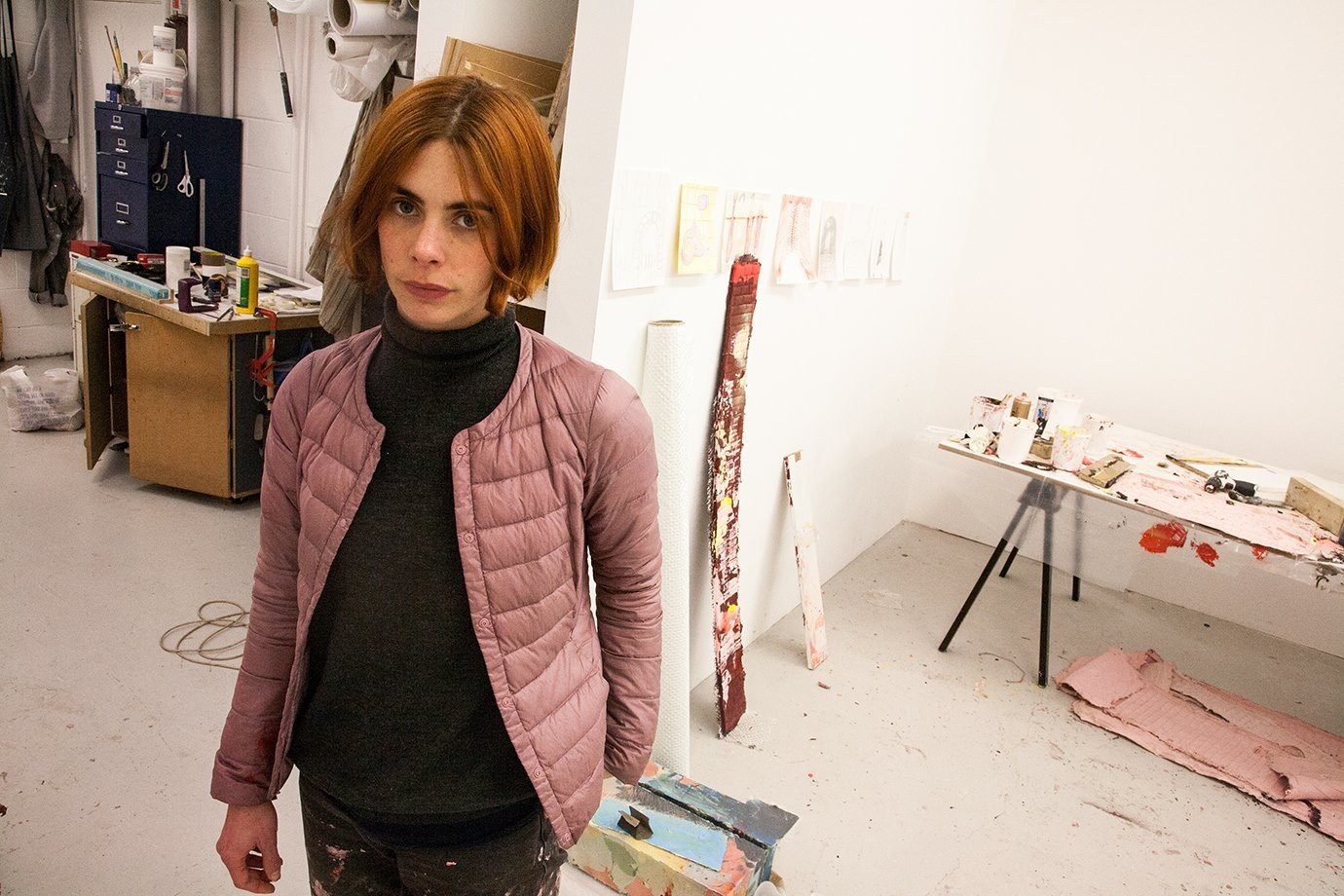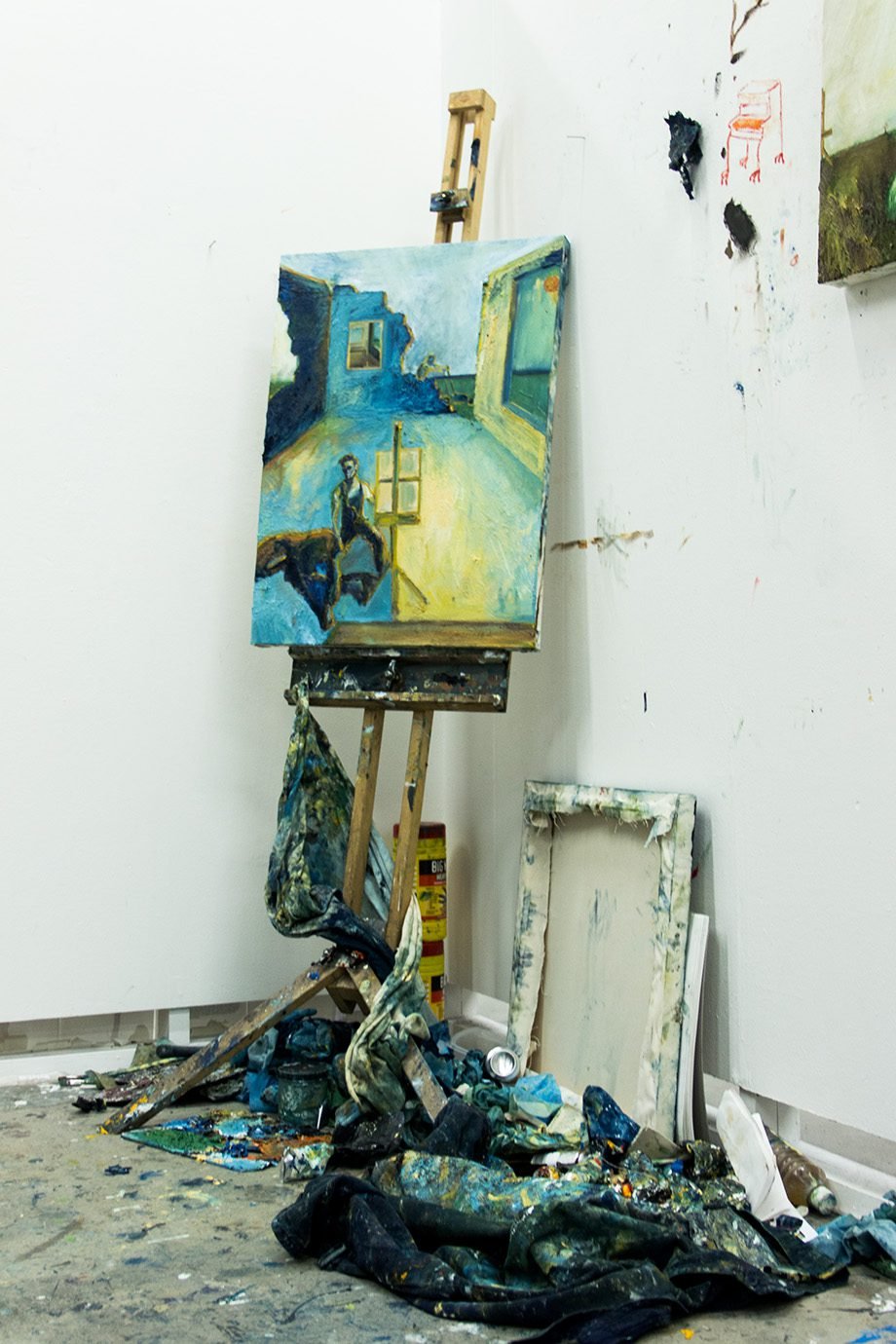This interview is part of DREAMERS, a collaborative project with MCQ that couples aspiring artists to their heroes for a one-on-one advice session. The conversations are recorded, redacted, and can be read in their entirety on my.mcq.com.
Friday 28 June 2021, 8:30pm China time
Luxi Yang: Do you consider yourself a full time artist?
Vivian Xiaoshi Qin: I think I consider myself like that in terms of being a maker, but I don’t depend on art to make money. If you define a full time artist as someone who uses art to have a sustainable income, then I don’t think I have that. But I do put a lot of work into my art. I do freelancing, I do a lot of interpretation and translation work, and other stuff here and there. There are films for which the team needs a local fixer, to kind of show the crew around and be the translator. I also recently worked on an interview project for MIT about Shenzhen’s King of Bootleg – also known as the ‘shanzhai king’ – it’s the guy who was able to make a version of an iPad within two months after the original one was released. I think that type of work gives me something for my own art. It doesn’t necessarily become a part of my work, but these projects do give me a lot of energy. And recently, I got some material too! I worked with a documentary group to shoot in an AI sex doll factory in Zhongshan, and I got to talk to a lot of those dolls. If you’re familiar with my older pieces, you know that I ask questions about the future to scientists, artists, and philosophers. And I did the same thing with the sexy robot, and asked them: “what will the future be like?”, and, “what’s the stock market?” Those random questions, which she then answered at a very basic level. And while I was there, the team was very nice and gave me this material that’s used to make the dolls. Also after finding out that I’m a sculptor – I studied ceramics and sculpture in grad school – they actually invited me to create the dream girl in like all men’s fantasies, and sculpt the head for their doll! I didn’t end up doing it, but I thought it was very nice they trusted me to create this version of a lot of men’s sexual fantasy. [Laughs]
“When I started, I felt very lonely, because in the art world everybody knows everyone. I remember the first time I was there, it was an opening, and I knew nobody. ” – Xiaoshi Vivian Vivian
Luxi: Did you start your career this way? Has it always been making art but not depending on it to ear your income?
Vivian: There’s income but it’s just not sustainable. Last year I had my first show outside of China, in Paris, and the work was sold so I got income from there. After I finished my undergrad I worked for startups and did a lot of user interface and PowerPoint, pitching stuff and also making marketing material for different websites and apps. It was a really special time for me because I also got my first ever art job at the SculptureCenter in New York. The reason I went there is because in my undergrad I really liked Mika Rottenberg’s work, and she had a show there, so my professor told me about this place. I went there and said, “Hello, can I volunteer for you? Because I know you’re having these artists that I like, and I want to help other people.” When I started, I felt very lonely, because in the art world everybody knows everyone. I remember the first time I was there, it was an opening, and I knew nobody. But four years later, right before I left New York, I was at the SculptureCenter a lot and it was like I had become that person who knows everyone, so that was very special. Because my undergrad was in Ohio, I didn’t have a lot of knowledge about the real world of contemporary art. When I moved to New York, these artists that you’d learn about suddenly became real. I remember I was commenting on something on my friend’s Facebook and suddenly Martha Rosler jumped into the conversation. She’s very straightforward and vocal about a lot of things, and I think she was challenging me at the time. I just looked at her name and was so amazed and thinking: “Are you the Martha Rosler who made Semiotics of the Kitchen?” I think the experience of going to New York is very similar to this little exchange with Martha. Suddenly the people whose videos you saw in art class become real, and they’re talking to you. What was important for me was to surround myself with people whose work I loved. One example is that I was guarding a group show at the SculptureCenter and there was a piece from Anicka Yi that I really liked and so when I saw her, “Is there anything I can do to help you?” And she was like, “Maybe you can work for me.” At the time she was starting to get noticed and had four solo shows on. She’s a very hardworking person and very giving, and she taught me a lot of things that were wonderful, like doing things at your own pace and that people have different trajectories. You don’t really need to look at what other people’s careers are like, but instead have your own version. During that time, I spent a lot of my weekends going to hackathons and at one time my team actually won! That’s how I got approached for a job. The whole startup community is very open, and it’s another life that’s very far from the art world. It gives you breathing room and some inspiration.
“If you want to do something that’s very different from your pre-existing skill set, you need to build a bridge between the two and transit very slowly.” – Xiaoshi Vivian Vivian
Luxi: You said that you’re very happy doing something that’s quite far away from the art world. I was just curious, if you didn’t work at the SculptureCentre, or for Anicka and didn’t get to know all of those art people, and instead had just worked in the tech world… What if one day you’d find out that you have love and talent for art? What would you do to pivot to the art world without an art background?
Vivian: This is a question that I asked someone when I was interning at the SculptureCenter, and I got a very good answer. If you want to do something that’s very different from your pre-existing skill set, you need to build a bridge between the two and transit very slowly. At the time, there was a person who was amazing at her work within the development team, and she used to do fundraising for a politician before doing it in the art world. But because she had those fundraising skills, she could still do development for the art. I think everything in the world is interconnected, and depending on what you’re doing, you can always find a connection. You can make what you’re doing a part of what you want to do. If you have an app background at the time, and you want to get into the arts, I would suggest that you make an art app.
“I suffered greatly from this whole ‘nobody sees my work’ thing. ” – Xiaoshi Vivian Vivian
Luxi: If you have already created something, like the art app, how would you get people to notice you? For example people from galleries, to actually bring you into that world, and have people that know about art to come onto your works.
Vivian: It is a tricky thing to do. I think this question had been bothering me when I was an undergrad. I created a lot of work, but because it was in Ohio, we didn’t really have that much context in terms of contemporary art. You could show it in a coffee shop or in your school’s gallery. You might have seen this big popsicle sculpture about the demolition of my home, that was done in 2009, when I was a sophomore, and in my junior year I also did a big sculpture in Guangzhou. And at the time when I was doing it, there was actually a TV reporting crew, but I decided not to talk to them because I’m socially awkward. But if we take a time machine back, I feel like maybe I should try to talk to them. And so I suffered greatly from this whole “nobody sees my work” thing. In my senior year, we had these trips where you could go to New York. I didn’t know about the ‘rules ‘in the art world, and at the time nobody ever got to see my work, so I printed them as postcards, and brought them with me. I just gave people a lot of postcards at parties, but nobody does that, so I became this weird person [laughs]. I did this at a party one day with Yale MFA, and then one person approached me and said, “Are you a sell out?” And at the time, I didn’t understand what the word ‘sell out’ meant so I said yes, and the person didn’t have anything to respond to! So those postcards did not work out, but I do remember that at the time there were some very generous people, for example the Head of the Board of the SculptureCenter. He would look at those postcards though. So… word of advice: don’t overdo it! Just imagine, if you were the other person, would you feel weird?
Luxi: Giving away postcards feels like a tech startup-ish thing to do. I feel that artists might think, “Oh, I’m not gonna just walk up and promote my work, it’s so awkward.” But often in tech startups, people would just casually go and pitch their idea to an investor at some party. So, as I’m understanding this, to work freelance or as a self-employed artist, you kind of have to have the mindset of running a tech startup, and always be active and look for opportunities for people to notice you, if you’re just starting out?
Vivian: But if you switch your point of view to the other person’s – so you are now a famous artist and someone approaches you – you can just imagine what kind of thing is going to turn people off. I think it goes back to what I said before: you need to be around people that you really believe in and whose work you really appreciate. So if you are near those people then you can naturally appreciate the work and talk about specific topics. For me, as I was socially awkward, I didn’t know how to do those things with the purpose of getting attention on specific things. Maybe also because I failed at the postcard challenge, and it scarred me… I know that I’ve been helped a lot before, and I want to help other people. So I think there are people out there who have very similar experiences. Show people who you are and share interests, and go to the people that you really appreciate.
“Surround yourself with people that you admire, and create your own community. ” – Xiaoshi Vivian Vivian
Luxi: Do you think you would be able to do what you have done without getting an MFA? What has driven you to get a master’s degree in art?
Vivian: I got that because I really wanted to learn more about art. I didn’t go to grad school because of career choices, and at the time I had no idea about how the whole art world works. I simply wanted to be with the people whose work I liked. I had heard other people’s advice: if you’re going to grad school, you should go much later, because when I got there I was maybe the second or the third youngest of the whole class. They would usually recommend grad school to people who are maybe mid-career; perhaps it will work better. I don’t think it applied to me, because I was not there for my career, I was there to learn new things, and it was a very exciting experience to discover things that I didn’t know existed before. It was also cross-disciplinary, so not just the arts. I went to Columbia where you can take classes from other departments, they’re all kind of open. At the time one of the people there mentioned it’s like you’re given a shopping cart to go into a supermarket with all the things you ever wanted, for a very limited time. And then it’s done. I got what I wanted, and I know that I want to learn things all my life, and you can learn something every day.
Luxi: One last question: is there any advice you would like to give to young people wanting to enter the art world?
Vivian: It’s a summary of what I said before: surround yourself with people that you admire, and create your own community. And if you’re not good at doing something, or if you’re not quite there yet, or if you’re going from one field to another, just give yourself time and build that bridge slowly towards what you want to do, and actually do it, because we can just end up talking about it. But if we don’t do it, you will never know what can happen. And one thing that I didn’t talk about earlier, what we really need to learn but often gets ignored is resilience. Like when I failed with the postcards or when another project didn’t work out: you always need to go back and do it again, and find another way to do it. It’s so easy to give up on things, especially now when there’s a lot of choice to do other things. Over the years I have seen a lot of talented friends who might’ve been very ahead of the time, they’ve kind of quit art. Everybody did that for different reasons, but if you want to do it, you just have to admit that some people will face more difficulty than others. Just don’t focus on that fact, but focus on knowing that you’ll have to work harder. This is what I tell myself, and it hurts, but you just gotta do it.
Interested in learning more? You can find all the interviews from the DREAMER series here.









